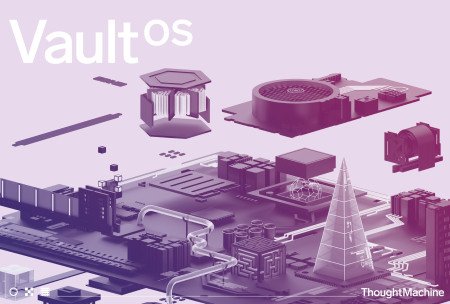[NEWS] Blockchain-based banking backend Vault OS from ex-Googler emerges from stealth mode
Originally from Techcrunch, slightly edited by me.
https://techcrunch.com/2016/07/13/blockchain-based-banking-backend-vault-os-from-ex-googler-emerges-from-stealth-mode/

Despite holding the vast majority of the world’s wealth (or perhaps because of that), banks aren’t exactly hotbeds of cutting-edge tech, often relying on decades-old systems for everyday tasks. ThoughtMachine, a company led by ex-Google engineer Paul Taylor, is looking to change that with a modern, fully integrated, blockchain-based banking operating system called Vault OS.
https://www.thoughtmachine.net/
The bombastic press release announcing the system’s emergence from two years of stealth development makes a lot of promises: the company “has solved the greatest challenge in fintech;” Vault OS is “100% future-proof,” “hugely flexible,” and “fixes broken banking forever.”
Whether Vault OS is able to live up to its own hype is a question that will have to wait (legacy banking systems aren’t replaced overnight) — but it’s hard to deny that the problem is real and the solution, or at least what the company reveals of it, is compelling.
The main job of Vault OS is to perform the core function of a bank: essentially, maintaining a huge ledger.
That’s something that a blockchain is uniquely suited to doing, of course, a fact that clearly did not escape Taylor, whose previous work led to the speech recognition software used by Google today.
Each instance of the OS will run its own private blockchain and cryptographic ledger, hosted as a service by ThoughtMachine. Of course, whether banks will be willing to essentially permanently outsource their most fundamental operations is yet another big question.
The benefits may be worth it: blockchains are secure, scalable, and versatile, and could conceivably replace legacy systems that limit or delay ordinary operations. Transactions would occur in real time, and are safely and centrally stored, allowing for deep data dives by both bankers and consumers. There’s even an API.
Naturally there are a ton of questions that must be answered, and assurances made, and regulations complied with, before any bank will touch this with a ten-foot pole. I’ve contacted ThoughtMachine with several — will they release code or a whitepaper for inspection? How is data migration handled? What’s the timescale for rollout? — and will update this post if they get back to me.
Additional content by @sebastien (mostly copy-pasted form the site, if you are lazy and want everything in one page ;-) )
- Kernel
The Vault OS kernel runs the core functions of the bank. It uses a centralised, permissioned cryptographic ledger as a single source of truth for all transactions. This ensures the highest degree of security, while allowing the bank to retain ownership and control. All banking products (deposit accounts, savings, mortgages, loans, credit card accounts) use a system of smart contracts.
- Categorisation
The first stage in learning about a customer's behaviour is to categorise their transactions. Our machine learning algorithms do fine grained analysis, categorising transactions into 60 separate types.
- Smart Contracts
Paper contracts suffer from all sorts of problems. People often don't really understand what they are reading, signatures can be forged and contracts lost. Smart Contracts solve these problems and more. They are written in code and signed digitally by the parties. Most importantly, a Smart Contract can do things, specifically make payments. A smart employment contract not only tells you how much you will get paid, but once active, will calculate your tax and pay you every month, without you or your employer having to lift a finger.
- SkyScraper
SkyScraper allows applications to safely and securely connect to an existing bank account. Once connected, it can read transactions and make payments. The transactions can be passed to other Thought Machine systems, for example, for analysis of spending and saving patterns. SkyScraper displays the transactions in an easy to read way, and provides logos for most companies, shops and organisations.
- Enterprise Platform
This underlies the day to day functions of staff in the bank. And similarly to Vault OS Gateway, enables bank facing apps and websites to be developed quickly and safely. It has a system of roles and permissions defining who can do what. Workflows and tickets can be used to automate, assign and track tasks.
- Vault Gateway
Vault Gateway brings many parts of Vault OS together to offer a single unified API to all large high street banks. It allows application developers to write apps for personal finance without having to take part in complex integration projects with each bank. It can securely store banking credentials if needed.